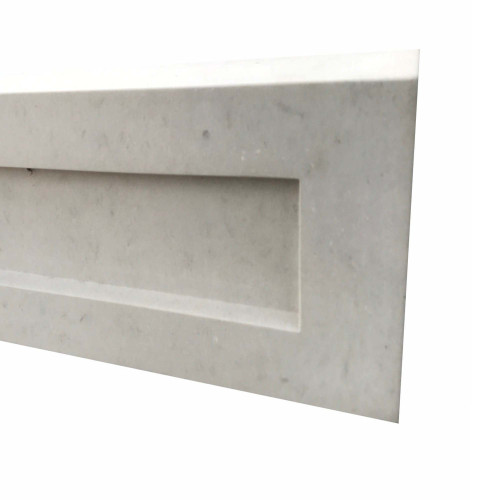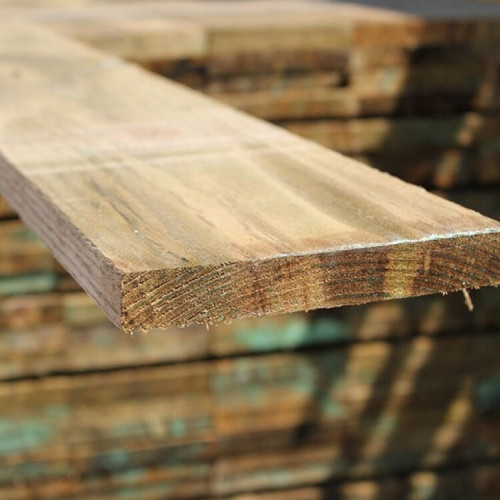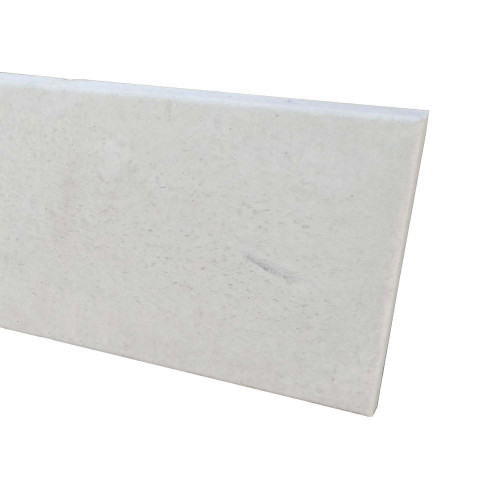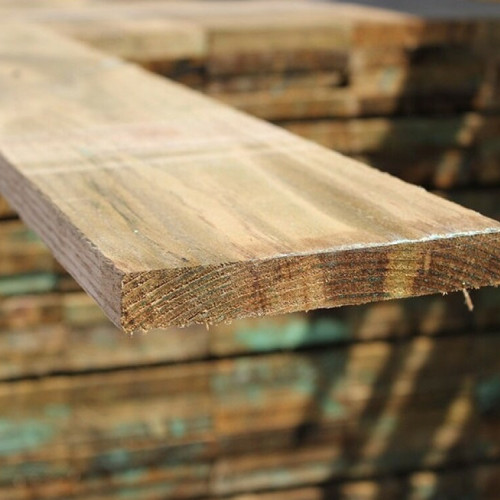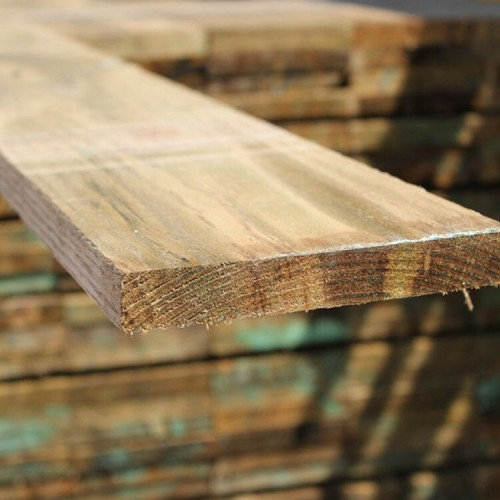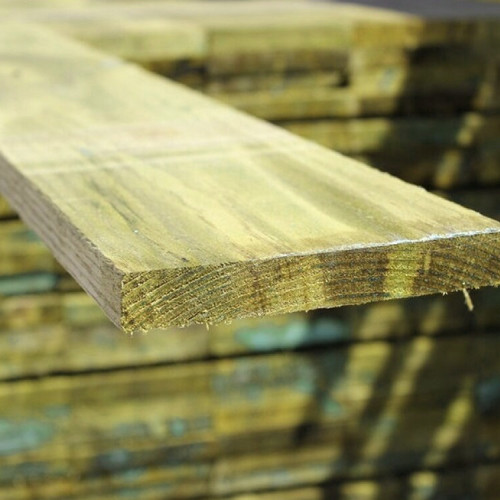Gravel Boards
Gravel boards play a crucial role in extending the life of your garden fencing. They are placed at the base of your fence panels and act as a protective barrier against moisture, soil, and pests, which can contribute to the deterioration of your fencing. By installing gravel boards, you can ensure your fencing remains in top condition for a longer period. Whether you're looking to enhance the durability of your wooden fencing or just seeking an aesthetic upgrade, gravel boards are a practical and visually appealing addition.
One of the primary benefits of using gravel boards is their ability to prevent rot and decay. When wooden fence panels come into direct contact with the ground, they are more susceptible to moisture, which can lead to rot over time. Gravel boards act as a buffer, keeping the wood elevated and away from damp soil. This not only extends the life of your fencing but also reduces the need for frequent repairs or replacements.
In addition to their protective qualities, gravel boards also contribute to the overall look of your garden. Available in various materials and finishes, you can choose gravel boards that complement your existing outdoor decor. Whether you prefer the natural look of wood or the robust appearance of concrete, there's a gravel board to suit every taste and requirement. Their sleek lines and uniform appearance can provide a neat and polished finish to your fencing.
Gravel boards are also instrumental in maintaining an even fence line on uneven terrain. If your garden has slopes or variations in ground level, gravel boards can help create a smooth and consistent base for your fence panels. This ensures that your fencing looks professional and well-installed, regardless of the landscape's natural undulations.
Furthermore, gravel boards can be an effective solution for deterring pests. Pests such as insects and small rodents often find easy access to your garden through gaps at the base of your fence. By installing solid gravel boards, you can block these entry points and keep unwanted visitors at bay. This adds an extra layer of protection to your garden, ensuring it remains a safe and pleasant space for you and your family.
Concrete Gravel Boards
Concrete gravel boards are a popular choice for homeowners seeking a durable and long-lasting solution for their fencing needs. Made from reinforced concrete, these gravel boards are exceptionally robust and can withstand harsh weather conditions, making them ideal for outdoor use. They offer excellent resistance to moisture and pests, ensuring that your fence remains in good condition for many years.
One of the standout features of concrete gravel boards is their strength. Unlike wooden gravel boards, which can warp or rot over time, concrete boards retain their shape and integrity. This makes them particularly suitable for areas with high humidity or heavy rainfall. Additionally, their weight and solidity provide extra stability to your fence panels, reducing the risk of damage during strong winds or storms.
Aesthetic appeal is another significant advantage of concrete gravel boards. Available in various finishes and textures, they can be designed to mimic the look of natural stone or wood, blending seamlessly with your garden's existing style. This versatility allows you to achieve a cohesive and attractive outdoor space without compromising on durability.
Maintenance is a breeze with concrete gravel boards. Unlike wood, which requires regular treatment and staining, concrete boards are virtually maintenance-free. A simple wash-down with water is usually sufficient to keep them looking their best. This low-maintenance aspect makes them a cost-effective option in the long run, as you save both time and money on upkeep.
Concrete gravel boards are also environmentally friendly. Made from natural materials, they are recyclable and have a lower environmental impact compared to their wooden counterparts. By choosing concrete gravel boards, you are not only investing in a long-lasting fencing solution but also contributing to sustainable gardening practices.
Wooden Gravel Boards
Wooden gravel boards offer a more traditional and natural look for your fencing. Crafted from high-quality timber, these boards are treated to withstand the elements and provide a sturdy base for your fence panels. They are an excellent choice for those who prefer the warm, organic feel of wood in their garden.
One of the main advantages of wooden gravel boards is their aesthetic versatility. Available in various types of wood, such as oak, pine, and cedar, you can select a finish that complements your garden's style. Whether you prefer a rustic charm or a sleek modern look, wooden gravel boards can be customized to meet your design preferences.
Another benefit of wooden gravel boards is their ease of installation. They are lightweight and can be easily cut to size, making them a convenient option for DIY enthusiasts. With the right tools and some basic carpentry skills, you can install wooden gravel boards yourself, saving on labor costs and giving you a sense of accomplishment.
Wooden gravel boards are also effective in protecting your fence panels from soil and moisture. Treated timber provides a durable barrier that prevents the onset of rot and decay, extending the lifespan of your fencing. With regular maintenance, such as staining and sealing, wooden gravel boards can remain in excellent condition for many years.
In terms of sustainability, wooden gravel boards are an eco-friendly choice. Sourced from responsibly managed forests, they are a renewable resource that contributes to environmentally conscious gardening. By opting for timber gravel boards, you support practices that promote forest conservation and reduce carbon footprint.
Gravel Boards Delivered
We understand that convenience is key when it comes to enhancing your garden. That’s why our delivery service covers a wide range of areas, ensuring you receive your gravel boards without any hassle. Our delivery network includes Bedfordshire, Berkshire, Buckinghamshire, Cambridgeshire, East Sussex, Essex, Greater London, Hertfordshire, Kent, Norfolk, Northamptonshire, Oxfordshire, Suffolk, Surrey, and West Sussex.
No matter your location within these regions, our team ensures that your gravel boards arrive promptly and in perfect condition. We take pride in our efficient and reliable delivery service, allowing you to get started on your fencing project without unnecessary delays.
For those residing in remote areas, we offer flexible delivery options to accommodate your needs. Our customer service team is always on hand to assist you with any queries or special requirements, ensuring a smooth and seamless delivery process.
Our commitment to customer satisfaction extends beyond just delivering high-quality products. We strive to provide an excellent shopping experience from start to finish, ensuring you have all the support and information you need to make your garden project a success.





